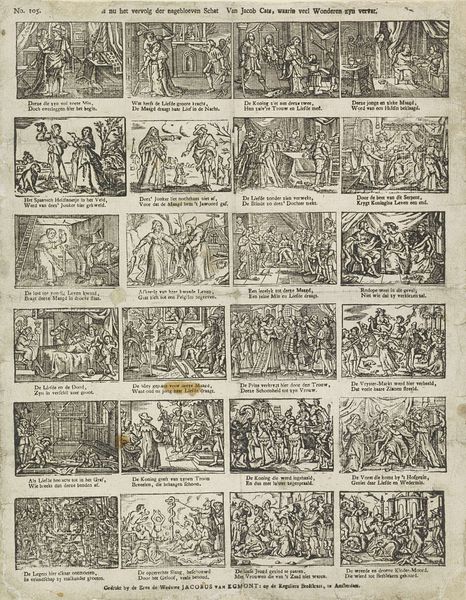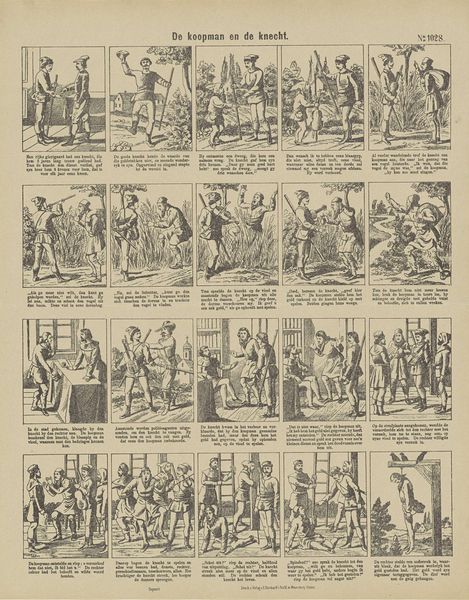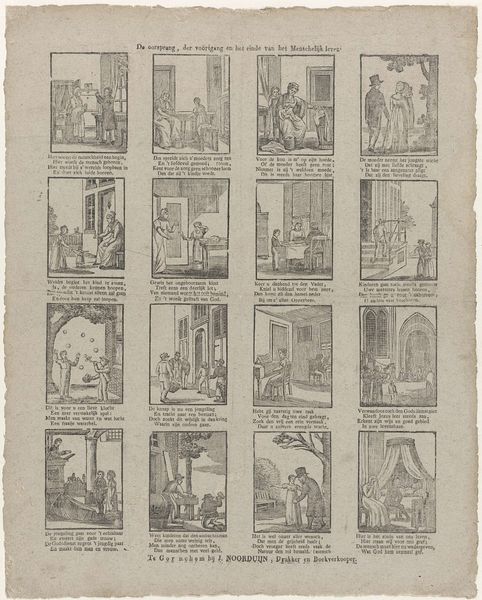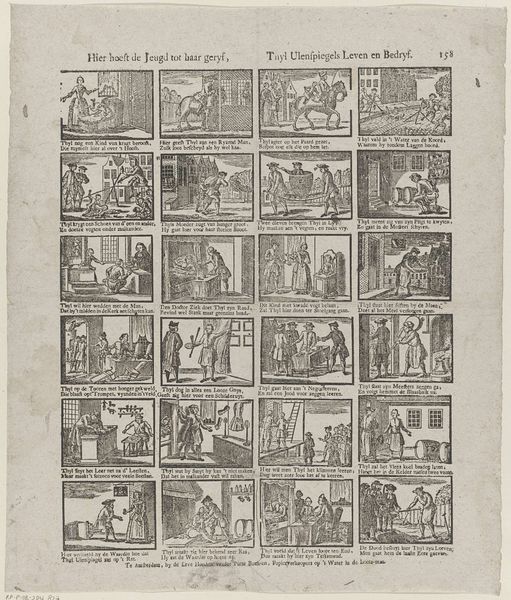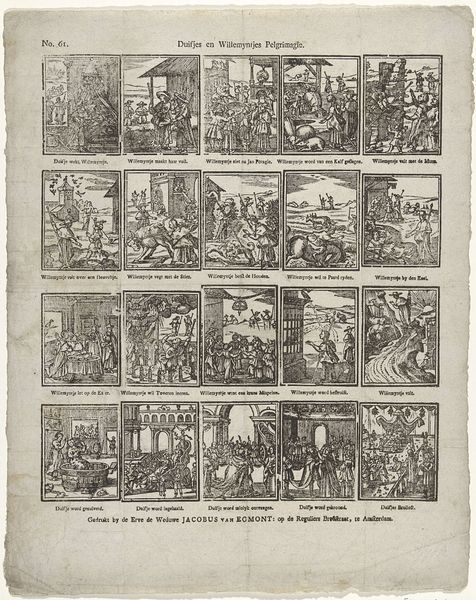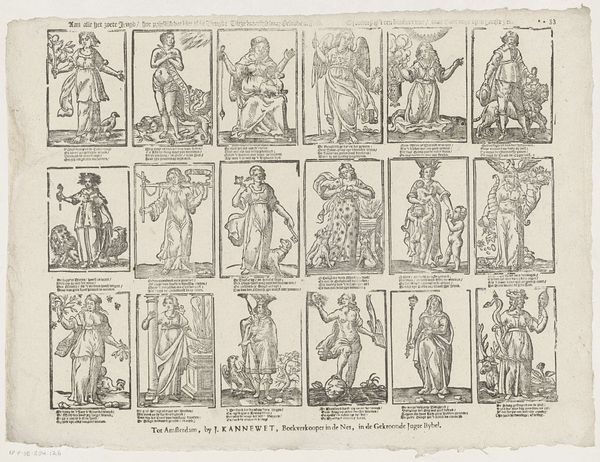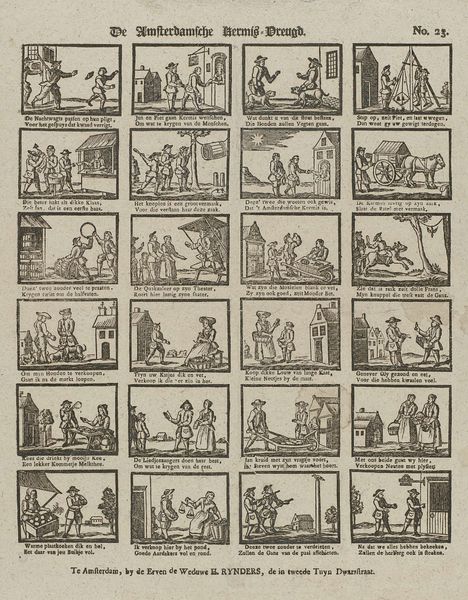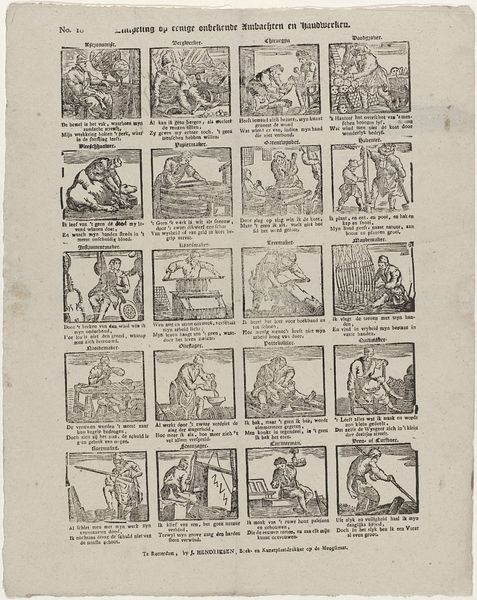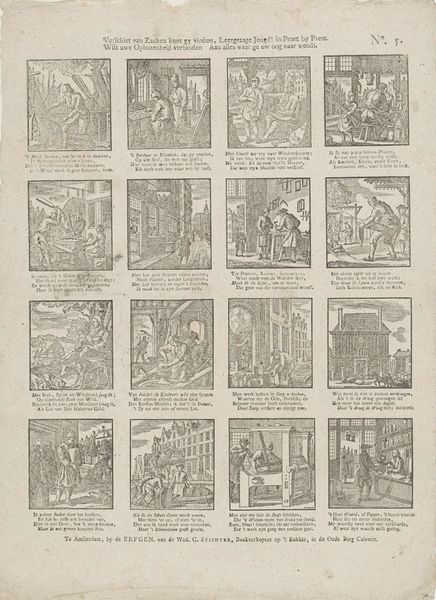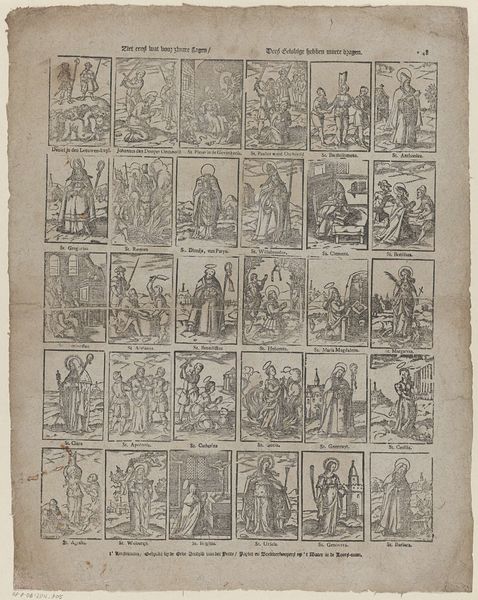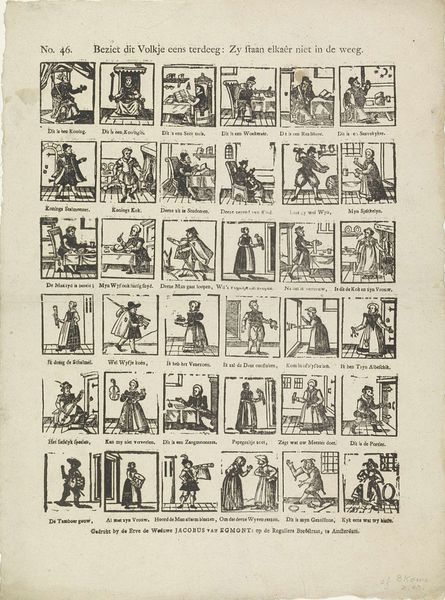
drawing, print, etching, paper, ink
#
drawing
#
narrative-art
# print
#
etching
#
paper
#
ink
#
intimism
#
romanticism
#
genre-painting
#
miniature
Dimensions: height 386 mm, width 276 mm
Copyright: Rijks Museum: Open Domain
Curator: Well, hello there! We’re looking at an etching titled “Blad met zesendertig rebussen,” or “Sheet with thirty-six rebuses” made around 1820-1835 by an anonymous artist. Editor: Intricate doesn't even begin to cover it! It's like a whole world crammed onto one sheet. I’m immediately drawn to the detail. Each little scene has its own personality and mood. It's dizzying, in the best way. Curator: Exactly. These aren’t just decorative vignettes; each square contains a rebus - a puzzle using pictures and symbols to represent words or phrases. It's like a visual game or a riddle sheet that was popular during that era. The puzzles and images act as a kind of social commentary if you will. Editor: That's wild! So, it’s not just about aesthetics but also engaging with the audience in an intellectual, playful way? It feels incredibly intimate, almost like stumbling upon a private joke amongst friends, though its wide appeal means its far from a secret. Some are clearer than others but if you look closely you can see some are almost cruel, with people facing all sorts of predicaments, even at times fighting! I wonder what the running jokes of the time were? Curator: Indeed. Prints like these circulated widely. Imagine sitting around the fire after supper, trying to decode these rebuses with friends or family. This speaks to a culture of both literacy and sociability, using imagery to cleverly reflect or gently critique social norms and the world they were living in, especially amongst the growing literate middle classes. Editor: I adore how the artist chose everyday scenarios for the rebuses – people eating, working, falling in love, even getting into trouble! It highlights how integral play and puzzles were in interpreting their existence and, really, our collective humanity hasn’t shifted all that much since, has it? Curator: Not at all. It also underlines a certain democratizing force of print culture, bringing complex ideas and visual wit to a broader audience than, say, a singular oil painting in a wealthy home could achieve. It allowed more diverse members of society to share insights in the dominant issues and values of the day. Editor: It makes me think of today’s memes – condensed images encapsulating complex ideas in humorous ways. Different times, same impulse to connect and comment, I suppose! Curator: Precisely! This artwork invites us to see how much certain aspects of social engagement persist across time, just transformed through different mediums. Editor: Definitely given me a new lens through which to view the world, like those Victorian specs that add colour to an otherwise mundane grey-scale experience! Curator: Wonderful, I'm so glad. For me it demonstrates the importance of images not just as aesthetic objects, but as active agents in shaping how we think and interact.
Comments
No comments
Be the first to comment and join the conversation on the ultimate creative platform.
